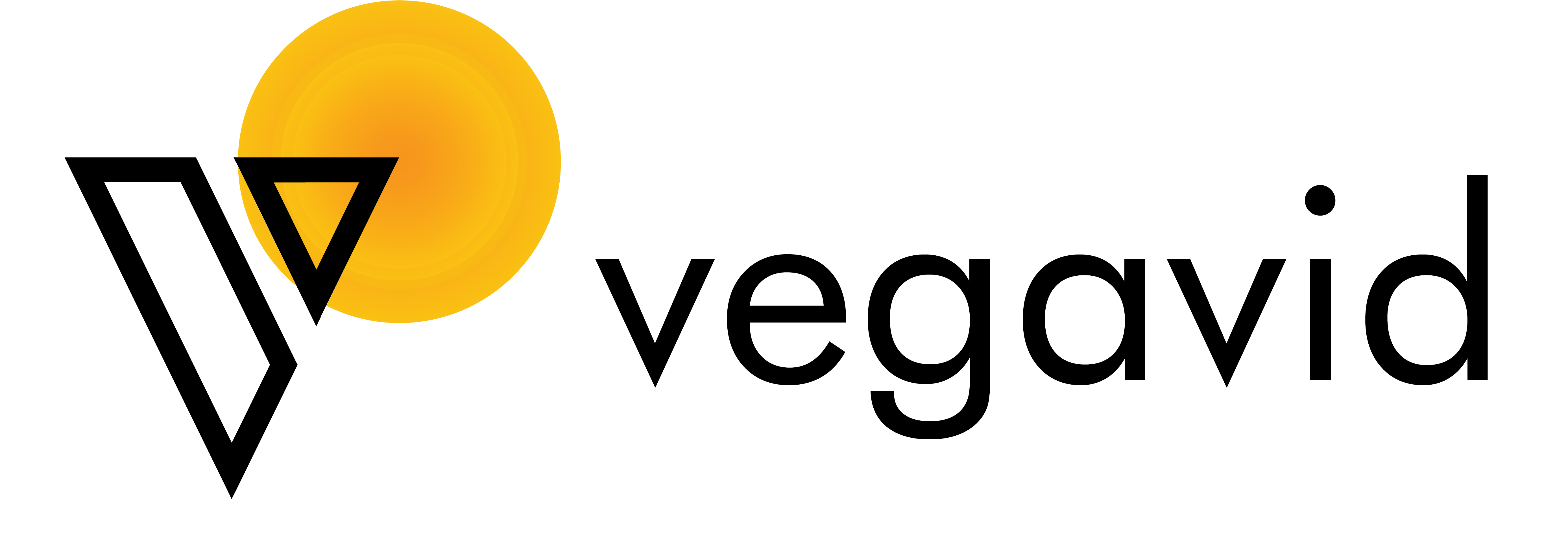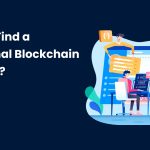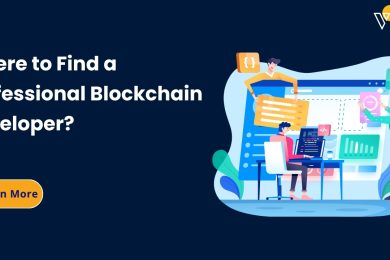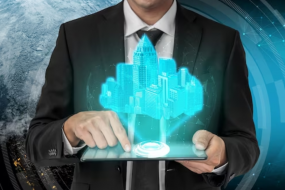Tokenization is the process of converting physical assets, such as real estate, into digital tokens on a blockchain network. These tokens represent ownership or equity in the underlying asset, allowing investors to buy and sell fractional ownership stakes of large-scale real estate projects.

Example of Tokenization in Real Estate
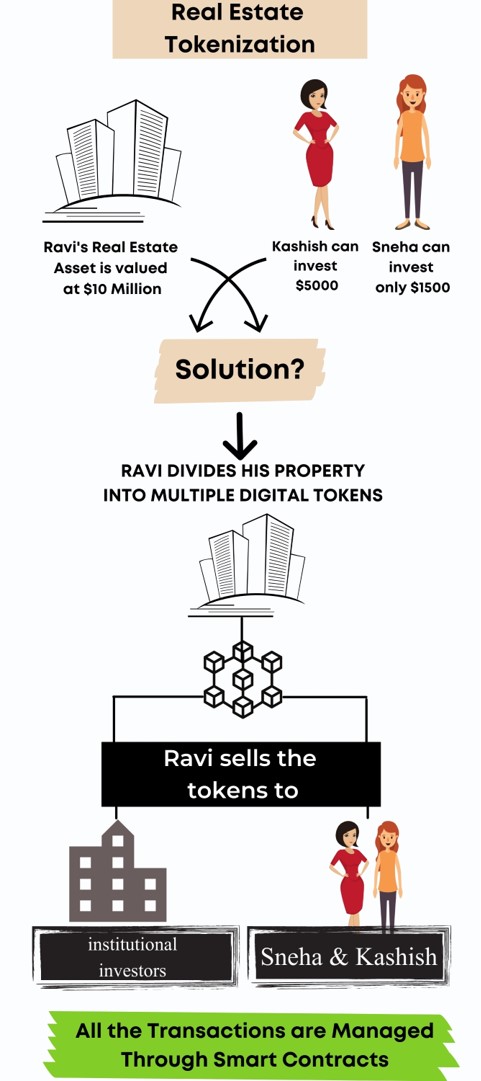
Imagine a prime piece of land for development. Traditionally, to invest in such a property, investors would have to purchase the entire asset outright or acquire a substantial share. However, tokenization offers a more inclusive approach:
- The land is assessed and valued by professional real estate appraisers.
- A tokenization company is appointed to create a blockchain-based platform.
- The land is divided into smaller units, each represented by a digital token.
- These tokens are made available for purchase on the blockchain platform.
By tokenizing the land, investors have the opportunity to invest in the project at a lower barrier to entry. They can purchase as many tokens as they desire, representing their proportionate ownership in the asset. This opens up real estate investing previously accessible only to high-net-worth individuals and institutional investors.## [What is an example of tokenization in real estate?]
Tokenization in real estate refers to the process of converting the ownership of physical real estate assets into digital tokens that can be bought, sold, and traded on a blockchain network. This innovative approach offers a range of advantages, including increased liquidity, fractional ownership, and enhanced transparency.
Advantage of tokenization
The real estate industry has traditionally been characterized by high barriers to entry, complex transactions, and opaque ownership structures. Tokenization aims to address these challenges by leveraging blockchain technology to create a more efficient, accessible, and transparent market.
1. Fractional Ownership
- Allows multiple investors to own shares in a single property.
- Enables smaller investors to access larger properties previously out of reach.
- Reduces the risks associated with investing in a single asset.
2. Increased Liquidity
- Facilitates faster and more efficient real estate transactions.
- Allows tokens to be traded on exchanges like stocks.
- Provides investors with greater flexibility for managing their real estate portfolios.
3. Transparent Ownership
- The blockchain records all ownership data immutably.
- Enables clear and easily verifiable proof of ownership.
- Reduces the risk of fraud and disputes over titles.
4. Smart Contracts
- Automated contracts that govern the transfer of ownership and payment.
- Ensures that transactions are executed smoothly and efficiently.
- Streamlines the closing process and reduces legal fees.
5. Alternative Funding Sources
- Tokenization creates new investment opportunities for institutional and retail investors.
- Provides developers with access to capital for real estate projects.
- Supports the growth of the real estate industry by broadening the pool of potential investors.
Example: Tokenizing a Commercial Property
Let’s consider an example of tokenization in action. Imagine a high-rise office building in a major city. The owner decides to tokenize the property, creating digital tokens representing ownership shares. These tokens could be offered for sale on a specialized investment platform.
Tokenization isn’t a one-trick pony. Its versatility extends across numerous domains, revolutionizing how we interact with data and assets. Let’s explore some compelling examples:
1. Text Tokenization: The Bedrock of Language Processing
Ever used a voice assistant or a chat application that understands your messages? Text tokenization plays a crucial role here. It involves breaking down text into smaller units, such as words, sentences, or even characters. This granular breakdown allows computers to analyze the meaning, structure, and sentiment of language, powering applications like machine translation, sentiment analysis, and text summarization.
Example: The sentence “The quick brown fox jumps over the lazy dog” can be tokenized into individual words for easier processing and analysis by NLP algorithms.
2. Code Tokenization: Building Blocks for Software Development
For programmers, code tokenization is a game-changer. It involves breaking down code into smaller, meaningful units like keywords, identifiers, operators, and punctuation marks. This granular view enables tasks like code analysis, syntax highlighting (color-coding different code elements for readability), and code completion (suggesting relevant code snippets based on context).
Example: The code snippet if (x > 0): can be tokenized into keywords (if, else), operators (>, :), and identifiers (x).
3. Image Tokenization: Unlocking the Secrets Within Images
Images are no longer passive entities. Image tokenization breaks down an image into smaller units like pixels or regions of interest. This allows computers to “see” and understand the content of an image, enabling applications like image classification (recognizing objects or scenes in the image), object detection (pinpointing specific objects within the image), and image segmentation (dividing the image into different regions based on content).
Example: An image of a car can be tokenized into pixel sequences representing the car’s body, wheels, and background.
4. Document Tokenization: Extracting Meaning from Textual Data
Documents hold valuable information, but extracting it manually can be tedious. Document tokenization simplifies this process. It breaks down a document into its constituent parts, such as paragraphs, sentences, words, and characters. This empowers tasks like information retrieval (finding relevant documents based on keywords), document summarization (creating concise summaries of lengthy documents), and information extraction (automatically extracting specific data points from documents).
Example: A legal document can be tokenized into paragraphs representing different clauses, sentences defining specific terms, and individual words with legal meaning.
5. Speech Tokenization: Giving Voice a Digital Form
Speech recognition wouldn’t be possible without speech tokenization. This process breaks down a continuous speech signal into smaller units like phonemes (the basic building blocks of speech) or words. This allows computers to understand the spoken language, enabling applications like voice assistants, speaker identification (recognizing who is speaking), and sentiment analysis of spoken language (understanding the emotions conveyed through speech).
Example: The spoken phrase “Hello, how are you?” can be tokenized into individual words “Hello,” “how,” “are,” and “you.”
6. Real Estate Tokenization: Democratizing Property Investment
Traditionally, real estate investment demanded significant capital. Real estate tokenization flips the script. It involves dividing a real estate property into digital tokens, allowing for fractional ownership. These tokens can be bought and sold on a blockchain platform, making real estate investment more accessible to a wider audience. Additionally, tokenized real estate offers increased liquidity (easier to sell) and transparency through blockchain technology.
Example: A high-rise office building can be tokenized, with each token representing a fraction of ownership in the property. Investors can purchase tokens for a smaller sum compared to buying the entire building.
7. Security Tokenization: Streamlining Investment in Securities
Security tokenization offers a new avenue for investing in securities like stocks and bonds.
Security tokenization involves creating digital tokens that represent ownership in a security. This can revolutionize the securities market by:
- Facilitating easier trading: Traditionally, securities trading involves intermediaries and complex processes. Security tokens, built on blockchain platforms, can streamline trading, making it faster and more efficient.
- Reducing costs: Eliminating intermediaries can potentially reduce the costs associated with traditional securities trading.
- Enhancing fractional ownership: Similar to real estate tokenization, security tokens can enable fractional ownership of a security, making it more accessible to smaller investors.
Example: A company can issue security tokens representing ownership in its shares. Investors can then buy and sell these tokens on a blockchain platform, eliminating the need for traditional stock exchanges.
8. Supply Chain Tokenization: Transparency and Efficiency in Goods Movement
Supply chains can be complex and opaque. Supply chain tokenization aims to bring transparency and efficiency to this process. It involves creating digital tokens that represent each stage of a product’s journey, from raw materials to finished goods. These tokens track the movement of goods, enabling real-time monitoring and ensuring product authenticity.
Example: A shipment of coffee beans can be tracked through the supply chain using tokens. Each token can represent a specific stage, such as harvest, processing, and transportation. This allows stakeholders to track the progress of the shipment and verify its origin.
9. Data Tokenization: Securing Sensitive Information
Data is a valuable asset, but security concerns remain a challenge. Data tokenization offers a potential solution. It involves replacing sensitive data with unique tokens that hold no inherent value. These tokens can be used for processing and analysis without compromising the original data.
Example: Customer credit card information can be tokenized. Instead of storing actual credit card numbers, businesses can store tokens that represent them. This helps minimize the risk of data breaches.
10. Voting Tokenization: Enhancing Security and Accessibility in Voting Systems
Voting is a cornerstone of democracy, but traditional voting systems can be vulnerable to fraud. Voting tokenization explores the potential for secure and accessible voting. It involves creating digital tokens that represent individual votes. These tokens can be used for secure online voting, reducing the risk of manipulation and increasing voter participation.
Example: Eligible voters can receive voting tokens that they can use to cast their votes electronically. Blockchain technology can then be used to securely record and verify these votes.
Conclusion
Tokenization offers a transformative approach to the real estate industry, with numerous benefits for investors, developers, and the market as a whole. By unlocking the potential of digital asset ownership, this technology enhances liquidity, enables fractional ownership, increases transparency, and opens up new funding avenues. As tokenization matures, it is expected to revolutionize the way real estate is owned, traded, and managed.
